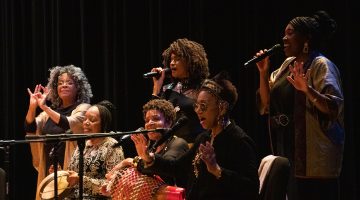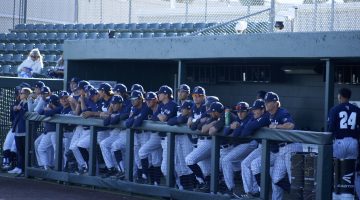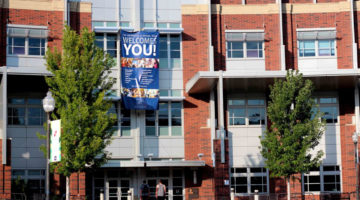This campus is an expensive operation. It’s expensive to pay professors, sign up for classes, park anywhere close, eat or drink anything on campus and use any kind of facility. And that has to start with a space, so it’s expensive to add buildings conducive to a properly running collegiate environment.
Last week, students had the option to engage in a campus-wide poll that would tack on another dollar figure to the already extensive bill we pay for our education: a $30 per semester fee to benefit the building of the new E.L. Wiegand Fitness Center, an approximate $71 million investment. On Monday afternoon, it was reported that 61 percent of the undergraduate population who voted were in favor of the fee, and that 44 percent of graduate students agreed as well.
Our question is: what was the denominator of that? It is unlikely that every student on campus voted, and depending on what that 61 percent constitutes could change the meaning of “majority vote” entirely.
In the big scheme of things, $30 is not all that much considering the already thousands of dollars each student already pays for classes and registration. For some, scholarships and financial aid will take care of that. For others, $30 might be the difference between fitness and paying a bill. And in 2016 when construction begins, the fee will raise to $60, paying for each students’ membership and use of the facility.
Money aside, building this center also comes with other costs: the loss of the metered parking area in front of the Joe Crowley Student Union. Albeit a small parking lot, it is not secret that parking has long been one of the most complained about facets of this campus. Are students believing this to be a trade they deem as worth it?
Don’t forget the Getchell project, which has been put on hold. So we have two large scale construction projects on a campus of 19,000 students and neither of them involve classrooms of any kind. What’s more is that part of the reason the two are being built is to accommodate for the projected 22,000 students that will populate this campus within the next decade. Growth without space?
“These projects recognize the importance of overall health of the student and will help ensure wellness is more fully integrated into our campus culture and the daily lives of our students, faculty and staff,” said President Marc Johnson in a university statement. “I am pleased to see this concept for enhanced fitness facilities move forward.”
Recently, however, there has been talk throughout the community by alumni of this institution about the responsible use of money raised.
“Why don’t they use that money for something else?” questioned a former student, 20-something years prior. “It doesn’t make any sense to me.”
What is important to one student may fall lower on the line of priorities to another, and vice versa. There is no denying that physical health is just as important as mental health; often times, it is seen as a means of improving the latter. This is the concept and driving force behind Johnson’s proposals. And it’s safe to say many students and community members agree.
But there is always a give and take. Where will the thousands of extra students house themselves in 2021? How many people will be crammed next to you in your small classroom? How much less time will teachers get to spend with students, even if we increase the amount of teachers as planned?
The project will clearly take years to complete, and also a significant amount of time to raise the funds. And while such a gorgeous facility will, no doubt, aid the overall health of students on campus, we ask the university to consider other uses for the money raised as well, so the future is not wrought with cutting curriculum or teachers due to lack of space or funding.
The Nevada Sagebrush editorial staff can be reached at editor@http://archive.archive.nevadasagebrush.com.











